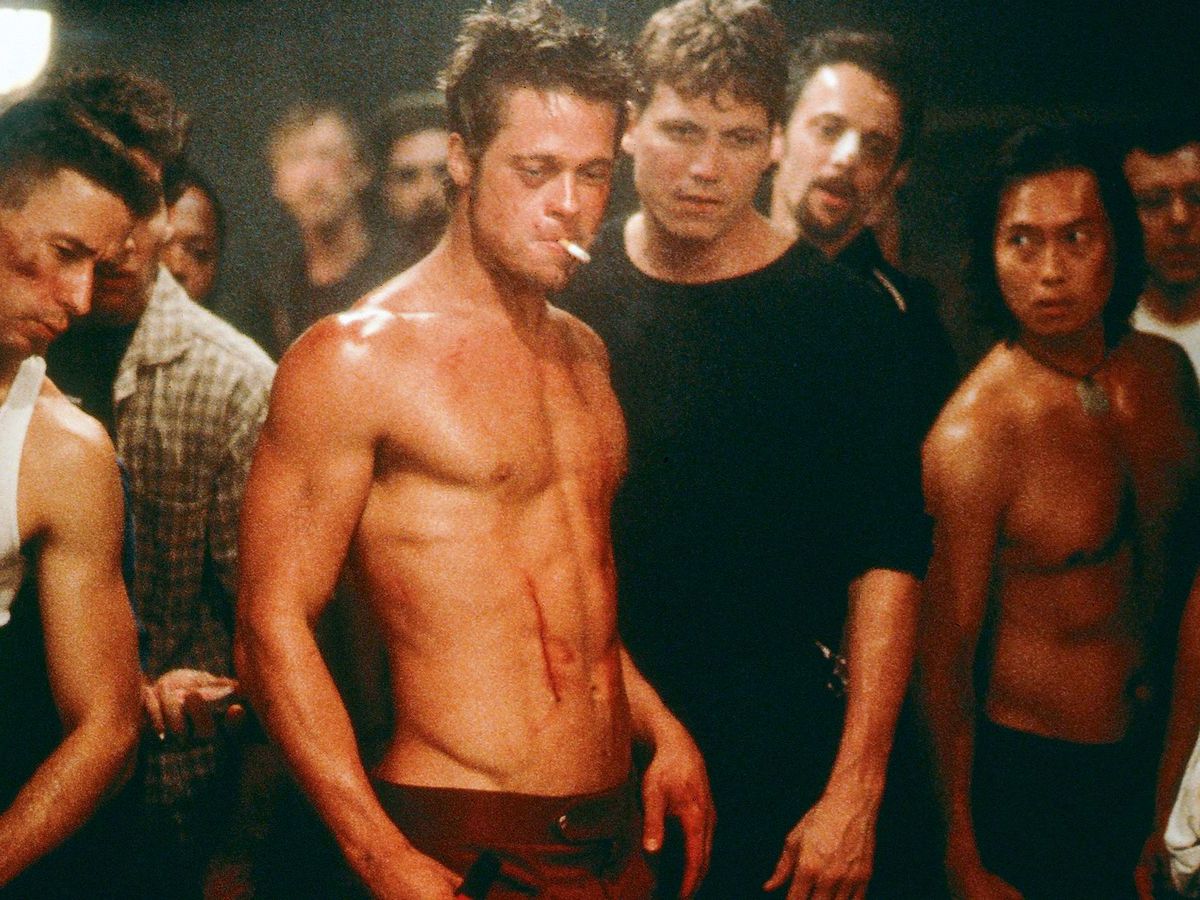Violence= emotions?
According to Greven fight club replaces unfiltered emotion with violence. There is no crying in Fight Club, it ultimately parallels the start of the film where all we see are hugs and tears in the support group. There is a rejection of male emotions in the film, seen by the character Bob. Bob who is first introduced in the support group is suffering from pancreatic cancer, he shows the most emotions, talking about his estranged children and crying while holding the narrator in his arms. Bob who ends up dying laid out on a table, shows the emotios=violence message, which even further perpetuates the acceptance of violence that the film is trying to sway. American male college-aged students who were in a study observing how college-aged men reacted to the movie described the film as a "stress release," "peace," and "liberating." (11, Rothe-Kushel), which Fincher and Palanuhik were looking to do, making the viewer feel as if they are truly IN fight club. Looking over the toxic masculinity and homoeroticism of the film for a second, Fight Club is seen as sacred to many because Rene Girard,a French anthropologist, is quoted in Fight Club: A Ritual Cure For The Spiritual Ailment of American Masculinity and urges that sacred violence is a component in well-functioning societies. The idea of violence goes into two categories pure within reason and contained, while there’s also impure violence which is lawless and warrants a sense of revenge (Rothe-Kushel, 7). With logic from Girard, Fight Club is seen as pure, it is helping society be better and do better. Tyler Durden and the Narrator (who were the same person, but the viewer is unaware of this till the third act) really do think they are doing good and helping society, the viewer sees this in the Raymond K Hessel scene where Tyler and the narrator put a gun to a shop clerk's head (execution style) to motivate him

How did this impact America?
Well with the release of fight club there were a handful
of crimes inspired by the film, go through the timeline and see
what people did after watching!